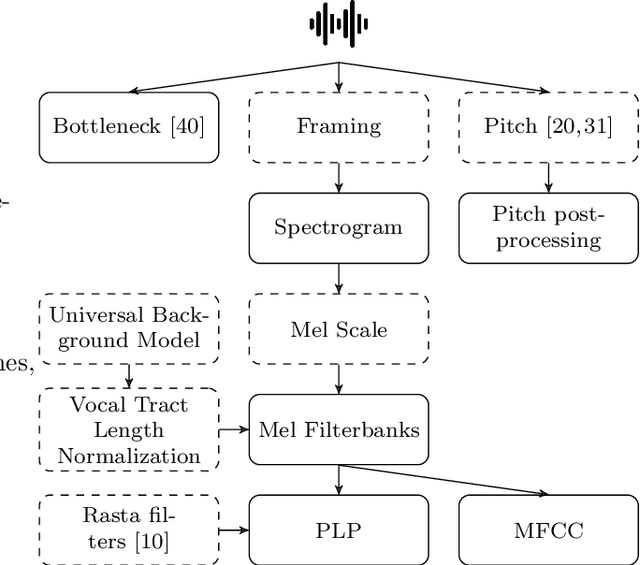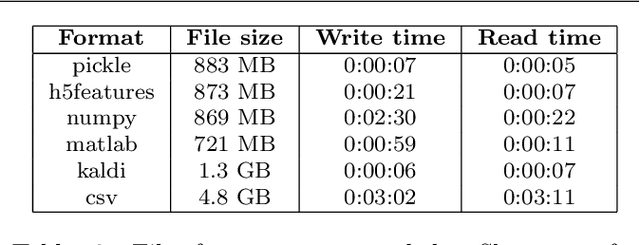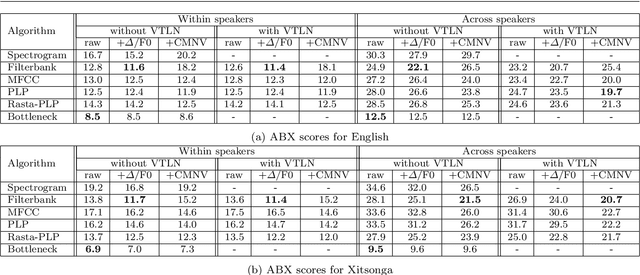Maxime Poli
BabyHuBERT: Multilingual Self-Supervised Learning for Segmenting Speakers in Child-Centered Long-Form Recordings
Sep 18, 2025



Abstract:Child-centered long-form recordings are essential for studying early language development, but existing speech models trained on clean adult data perform poorly due to acoustic and linguistic differences. We introduce BabyHuBERT, the first self-supervised speech representation model trained on 13,000 hours of multilingual child-centered long-form recordings spanning over 40 languages. We evaluate BabyHuBERT on speaker segmentation, identifying when target children speak versus female adults, male adults, or other children -- a fundamental preprocessing step for analyzing naturalistic language experiences. BabyHuBERT achieves F1-scores from 52.1% to 74.4% across six diverse datasets, consistently outperforming W2V2-LL4300 (trained on English long-forms) and standard HuBERT (trained on clean adult speech). Notable improvements include 13.2 absolute F1 points over HuBERT on Vanuatu and 15.9 points on Solomon Islands corpora, demonstrating effectiveness on underrepresented languages. By sharing code and models, BabyHuBERT serves as a foundation model for child speech research, enabling fine-tuning on diverse downstream tasks.
fastabx: A library for efficient computation of ABX discriminability
May 05, 2025



Abstract:We introduce fastabx, a high-performance Python library for building ABX discrimination tasks. ABX is a measure of the separation between generic categories of interest. It has been used extensively to evaluate phonetic discriminability in self-supervised speech representations. However, its broader adoption has been limited by the absence of adequate tools. fastabx addresses this gap by providing a framework capable of constructing any type of ABX task while delivering the efficiency necessary for rapid development cycles, both in task creation and in calculating distances between representations. We believe that fastabx will serve as a valuable resource for the broader representation learning community, enabling researchers to systematically investigate what information can be directly extracted from learned representations across several domains beyond speech processing. The source code is available at https://github.com/bootphon/fastabx.
Shennong: a Python toolbox for audio speech features extraction
Dec 10, 2021



Abstract:We introduce Shennong, a Python toolbox and command-line utility for speech features extraction. It implements a wide range of well-established state of art algorithms including spectro-temporal filters such as Mel-Frequency Cepstral Filterbanks or Predictive Linear Filters, pre-trained neural networks, pitch estimators as well as speaker normalization methods and post-processing algorithms. Shennong is an open source, easy-to-use, reliable and extensible framework. The use of Python makes the integration to others speech modeling and machine learning tools easy. It aims to replace or complement several heterogeneous software, such as Kaldi or Praat. After describing the Shennong software architecture, its core components and implemented algorithms, this paper illustrates its use on three applications: a comparison of speech features performances on a phones discrimination task, an analysis of a Vocal Tract Length Normalization model as a function of the speech duration used for training and a comparison of pitch estimation algorithms under various noise conditions.
 Add to Chrome
Add to Chrome Add to Firefox
Add to Firefox Add to Edge
Add to Edge